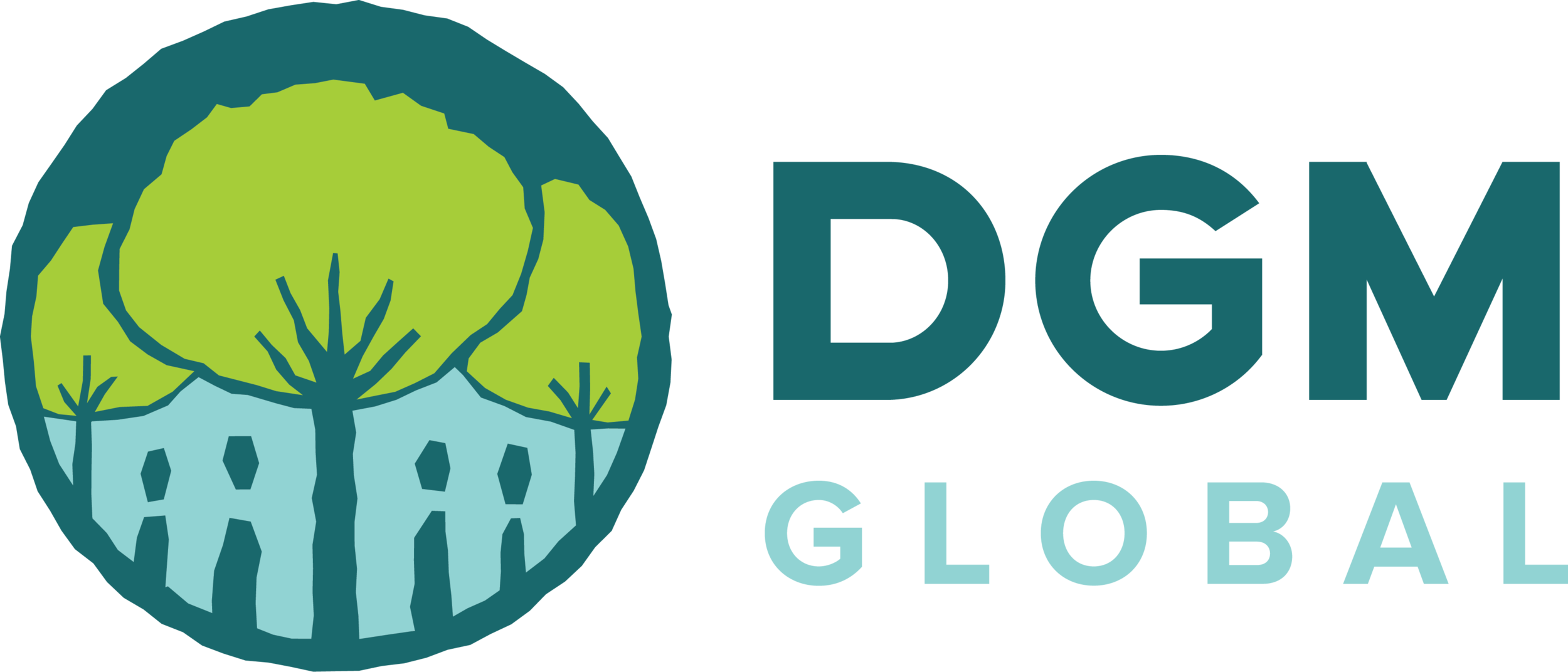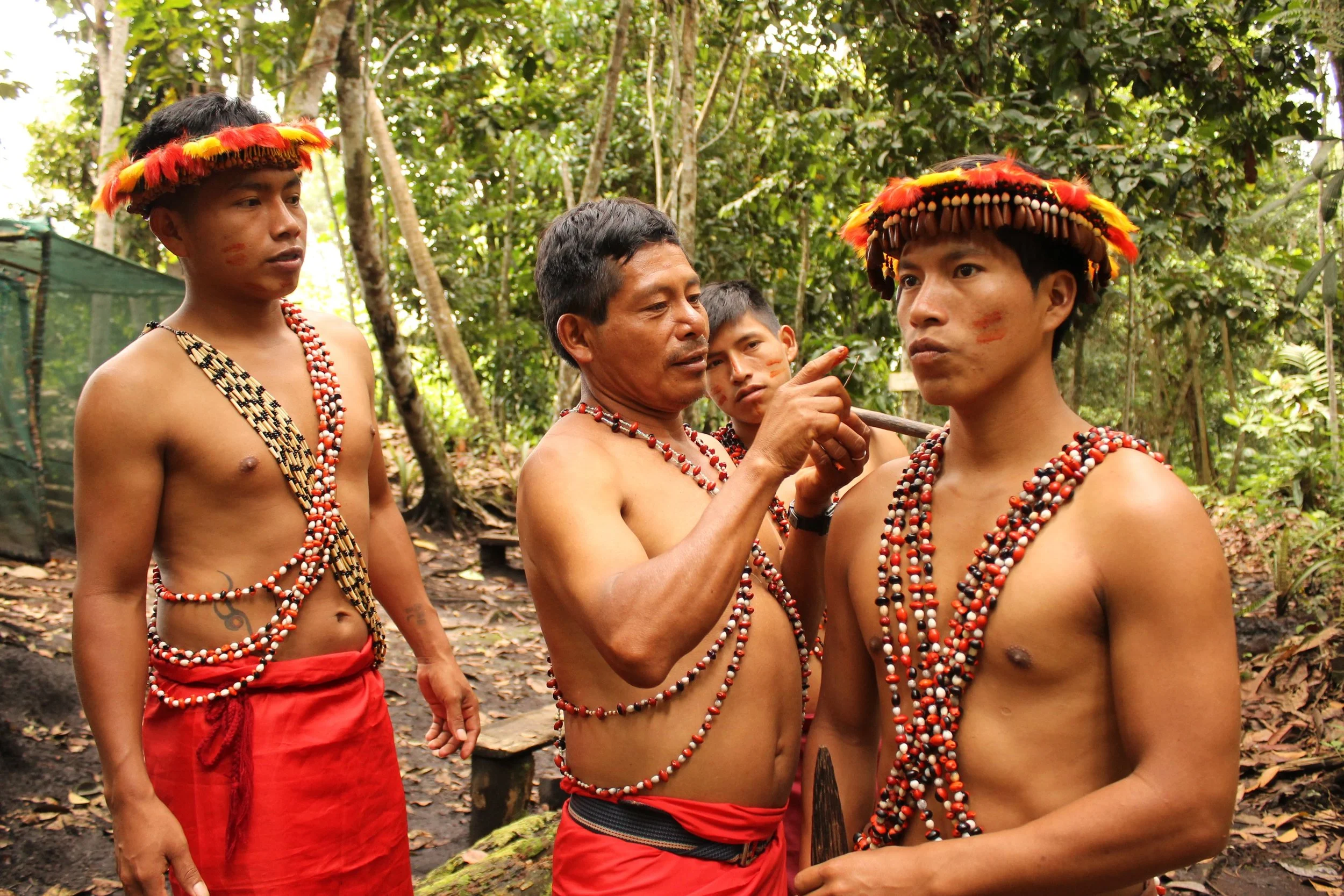Beyond land titling: Supporting sustainable land management by indigenous peoples
DGM Global cannot guarantee the accuracy of Google translations. In case of discrepancies, the original language takes precedence.
Contributed by: Milagros Sandoval, Senior Environmental Policy Manager at Conservation International Peru
Editor’s note: In honor of International Day of the World’s Indigenous Peoples on August 9, we are sharing a series of three posts highlighting the critical role indigenous peoples and local communities play in ensuring ecosystems are managed sustainably. This post highlights support provided by Conservation International for indigenous peoples and local communities in Peru. Click here to read last week’s post about DGM Global’s recent learning exchange focused on land rights in the Americas.
--
Located in the northeast region of Peru – in the San Martin region – the Alto Mayo basin houses fourteen indigenous Awajun communities, settled across 146,529 hectares (a little less than 20% of the entire basin). Originally from the northern part of Peru, the Awajun emigrated from Loreto and Amazonas in the first quarter of the 20th century when they faced pressure from oil exploration, border conflicts, military presence, and colonization.
As mentioned in the previous post in this series, indigenous peoples have a long history of demanding land and territory recognition in Peru, with 12 million hectares recognized so far and an additional 20 million hectares expected to be titled in the coming years. The Awajun have been fortunate in that they have been granted the titling of their lands as early as the 1970s – an important step in safeguarding their indigenous rights – however this wasn´t enough to safeguard their livelihoods.
© Ana Yi Awajun men wearing their traditional attire.
From the end of 1970s to the beginning of the 1980s, a large wave of mestizos (migrants) flooded into the Alto Mayo from the highlands of Peru. This migration wave was boosted by two factors: the completion of the North Interoceanic Highway, one of the most important highways in Peru, as well as the promotion of public policies to incentivize relocation to this supposedly unpopulated area. Public policies during this time lacked multicultural considerations, and the Peruvian population was largely unaware of the presence of indigenous peoples in the Alto Mayo.
The migration of these mestizos tremendously changed the livelihoods of the Awajun communities. For one, the Awajun were now acutely aware of mestizo life dynamics, where as before, production, trade, income and consumption had not been part of their traditional lifestyle. As such, Awajun were struck by the need to generate income to support themselves; however, in the eyes of mestizos, Awajun´s natural resources – forests, traditional knowledge or any form of subsistence – did not have any intrinsic value. Awajun, therefore, were unable to procure revenue from these resources, and could only generate income renting their lands.
From standing forests and rich ecosystems to rice, coffee, and other plantations, the renting of indigenous land has dramatically changed the original composition of the Alto Mayo basin.
From 2001-2016, deforestation in the Alto Mayo basin represented about 22% of the 402,635 hectares lost in San Martin. About half of the forest area lost in Alto Mayo came from the rented lands of the Awajun indigenous communities.
Land renting also hasn´t solved the Awajun´s income needs. They continue to live under the poverty line, and many of their challenges have grown worse. With increasing soil degradation and loss of their traditional governance systems, the Awajun people and their intrinsic relationship with the forests are now in danger. Awajun communities are on the frontlines of deforestation. Some, such as the Shampuyacu community, have lost up to 80% of their forests.
© Ana Yi Women working on their seedlings in the Nuwas Forest
These communities clearly demonstrate that land titling policies are not enough. They must be accompanied by proper valuation of natural resources, reduction of deforestation, and the conscious minimization of socio-environmental conflict, or indigenous communities and their local ecosystems will suffer.
In light of this, Conservation International (CI) Peru has been working with the Shampuyacu community since 2013, and more recently with the Alto Mayo community. Their main approach is to promote intercultural dialogue, reflected in their support for the participatory creation of Community Life Plans, strategic management mechanisms which include a self-assessment exercise done by community members. Communities discuss their needs and priorities, and reflect on threats, future objectives, and overall goals. Through this exercise, they are able to identify an action plan – accounting for health, education and sustainable management – providing equal opportunities for both men and women to participate. In 2017, CI Peru signed conservation agreements, modeled after CI’s Conservation Stewards Program, with both communities.
© Ana Yi Women during a training session on Awajun iconography
In Awajun communities, these conservation agreements provide economic alternatives, such as the establishment of agroforestry systems linked to sustainable markets for communities’ products – including coffee, cacao, traditional medicinal plants, and cultural crops, such as manioc, from the communities’ gardens.
As a result, the Awajun have established a women´s community forest (Nuwas forest), giving 64 women the opportunity to engage in the preservation of Awajun traditional knowledge. 100 medicinal plants have since been identified for conservation and two varieties of medicinal plants have been turned into herbal teas for specialized tea markets. 92 indigenous families are receiving technical support to produce sustainable coffee and cacao, and 46 women are growing and conserving 29 varieties of manioc, a staple crop for Awajun culture. Additionally, the Peruvian government has become a strategic partner in the sustainable management of these resources, providing benefits to indigenous communities in return for the protection of their forests.
Restauración Ribereña © Edward Isla Awajun community working to restore their river.
So have these programs and conservation agreements worked? Their benefits are apparent through GEOBOSQUE, a national forest monitoring platform in Peru. In the Alto Mayo community, it indicates that annual deforestation has dropped from 62 hectares in 2016 to just over 10 hectares in 2017. Comparing these figures to the 2010 deforestation rate of 972 hectares suggests that this strategy is working and should be expanded to the other Awajun communities of the Alto Mayo and beyond.
While land titling is a necessary step for the recognition of indigenous lands and their resources, it is not sufficient. Complementary policies supporting sustainable management, access to specialty markets, food security, and the protection and transference of traditional knowledge are essential for indigenous peoples to thrive as protectors of the forest.
Next week, Luis Barquin (Managing Director, DGM Global Executing Agency) will discuss increasing evidence that the recognition of indigenous peoples’ rights is critical to natural climate solutions. Stay tuned!




